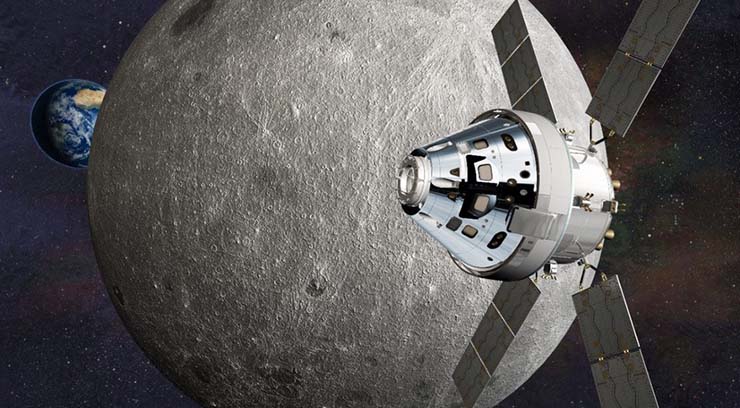
DENVER. The International Astronautical Congress (IAC) in Bremen, Germany, Lockheed Martin (NYSE: LMT) announced it is studying interest in flying commercial payloads aboard NASA’s Orion spacecraft. The market analysis is the first step toward the company’s vision of bringing commercial opportunities to deep space and fostering a thriving commercial marketplace beyond low-Earth orbit, a company press statement said on October 5.
Lockheed Martin is the prime contractor for Orion, the world’s only spacecraft designed for human deep space missions that will take astronauts farther into space than they have ever gone before.
The company is asking for both domestic and international organizations to provide ideas of commercial payloads that would fly on one of Orion’s upcoming missions to the Moon and back. The payloads could be for science, STEM, art and entertainment, data or any other commercial endeavor. Payloads can be flown in the interior crew cabin or mounted to the exterior and can be static or deployable.
Lockheed Martin is working with NanoRacks to perform the study. NanoRacks is the leading provider of commercial access to the International Space Station, with services including safety, launch manifesting, payload integration, logistics and astronaut crew operations. The company has brought more than 700 payloads to the space station.
“Access to the Moon and deep space for commercial entities opens up new worlds for all of us. It advances science, powers innovation, and inspires a new generation of engineers,” said Mike Hawes, Orion program manager and vice president of Human Space Exploration, Commercial Civil Space at Lockheed Martin Space. “We’ve seen that model work on the International Space Station in low-Earth orbit, and now, working with NanoRacks, we’re applying that same successful model to deep space.”
Building on a proven and robust infrastructure in Orion, commercial access to deep space could be offered at a reasonable price and with a high degree of confidence in success.
“At NanoRacks, we pride ourselves on knowing exactly what our commercial customer needs are for a growing number of in-space platforms and knowing how to deliver efficient services at a competitive price. That is why we see this effort with Lockheed Martin as a win-win,” said Jeffrey Manber, CEO and Co-Founder of NanoRacks. “Lockheed Martin brings unmatched capabilities in engineering, mission management, and deep space vehicle design. NanoRacks delivers a strong understanding of the market and an ability to match the needs of customers with a technical solution. Working together, we believe we can prepare for future missions by creating unprecedented opportunities and building a solid foundation for commercial opportunities at the Moon and, one day, beyond.”
Commercial payloads on Orion are a natural starting point for future expansion into areas like the lunar Gateway, landers, and even Mars spacecraft. By starting with Orion, industry could work with NASA and the international community to standardize the interfaces between national exploration ships and commercial payloads. Doing so will make it much easier to plug into future exploration platforms and give commercial providers a predictable and simplified design and engineering framework.
Although NASA is aware of the market assessment there is no current agreement or commitment with NASA on how this would be implemented.








